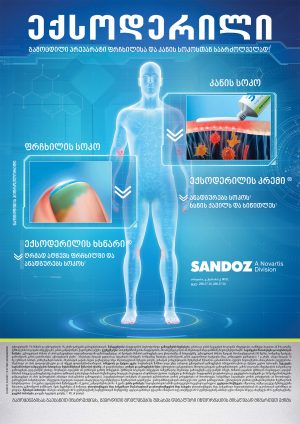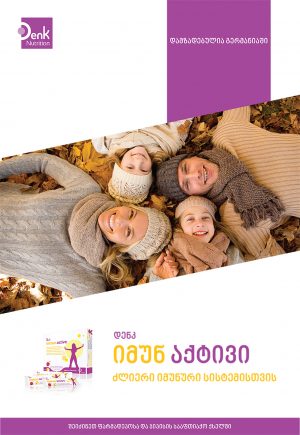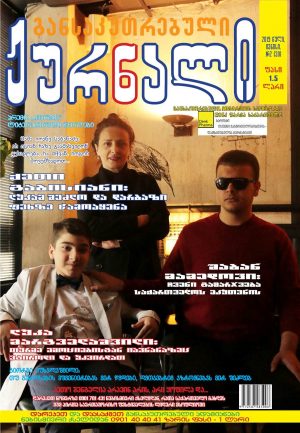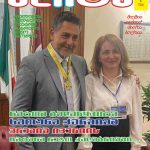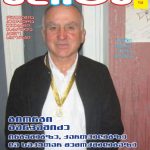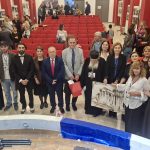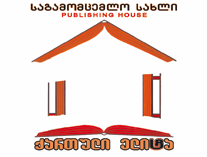Interview with People’s Artist of Ukraine Volodymyr Koziuk. Conducted by Nugzar-Petre Chiaberashvili, Director of the “publishing house Georgian Elite”
The 29th annual Bloor West Village Ukrainian Festival in Toronto once again brought together thousands of Ukrainians and friends of Ukraine. This year, a special highlight of the festival was the presentation of a unique art project by People’s Artist of Ukraine Volodymyr Koziuk — “Project 24.” The exhibition, created in collaboration with a team of artists, became an emotional testimony of war, pain, and the spiritual strength of the Ukrainian people.
— Volodymyr, how was the idea of “Project 24” born and what does this series of paintings mean to you?
— This idea appeared on the most tragic day — February 24, 2022. The first painting — “Invasion” — was created at a moment when words were powerless. Each new day of the war brought new stories, and step by step, the cycle of 24 paintings emerged. For me, “Project 24” is not just painting, it is a visual chronicle of our struggle, it is both a wound and a memory, but also faith in the future. We created it together with artists Yevheniia Bozhko, Valeriia Kuzmenko, Olha Tiazhelova, and my daughter Olha Koziuk. We worked without rest, sometimes without light and heat, under the sound of shelling, but we had one goal — to show the world the truth about the war and the strength of the Ukrainian people.
— Your exhibition has already been presented in Canada, at the Toronto festival. How was the reaction, and why did the premiere take place there?

— For us, it was symbolic to start the international tour precisely in Canada. The festival in Toronto gathered thousands of Ukrainians and friends of Ukraine, and there the special highlight was the presentation of “Project 24.” The project was presented by the Zinoviy Kozytskyi Charitable Foundation within the initiative “We and the World,” upon the invitation of Yuriy Klyufas. The Canadian audience perceived it very deeply — it was a moment of empathy, a moment of unity. And then the exhibition will travel to cities in Canada and the USA, and I am sure that everyone who sees it will be able to feel our pain, but also our faith in victory.
— Who helped you realize this project and what are its prospects?
— First of all, I want to say: no major project in the history of art has ever happened without patrons. I am deeply grateful to Zinoviy Kozytskyi — his contribution to Ukrainian art today is truly invaluable. This is not only the opening of the ZAG Gallery but also systemic support of projects aimed at telling the truth about the war and helping our soldiers. Special thanks go to curator Khrystyna Berehovska — her professionalism, critical perspective, and management turned the project into not just an exhibition, but an event of national significance. I am also grateful to Mykola Filonov, who was the first to provide funds and ensured high-level media support.
The prospects for the project are enormous. “Project 24” has already become part of the history of Ukrainian art, and now it is embarking on an international tour. I believe that ahead there will be exhibitions in the world’s largest cultural centers, because this is not just art — this is cultural diplomacy, this is the voice of Ukraine that must be heard everywhere.
— The project “Ukraine Through the Ages” opened a new chapter in Ukrainian art. Tell us, how did you manage to realize such an ambitious initiative?

— The realization of this project became possible thanks to teamwork and broad support. First of all, I would like to emphasize the key role of patron Oleksandr Svyshchov, Vice President of the public organization In the Heart with Ukraine. His participation was a decisive factor in the project’s success. In addition, our organizers, partners, and experts made important contributions — each brought professionalism and passion. Together, we were able to create something truly unique and significant for Ukrainian culture.
— In which locations was the exhibition presented, and why did you choose these venues?
— The exhibition was held in a number of places that are symbolic for Ukrainian history and culture: at the National Reserve “Sophia of Kyiv,” the National Museum of Folk Architecture and Life of Ukraine, the Verkhovna Rada of Ukraine, Taras Shevchenko National University of Kyiv, the National Museum in Lviv, and the Vinnytsia Regional Art Museum. Each of these locations carries deep symbolism and meaning for our people. They represent our cultural heritage and reflect the diversity of Ukrainian identity. We aimed to embrace the whole country — its heart and soul — to show that our history and art unite us as a nation.
— Volodymyr, the exhibition “Ukraine Through the Ages” in Strasbourg, during the PACE session, is without exaggeration an event of global importance. Do you see it as a culmination or the beginning of a new stage?
— It is, without a doubt, a peak — but not the finale. It is the first step toward new heights, a step on behalf of Ukraine. I sincerely thank God for the opportunity to live, to be, and to create. The fact that we were able to open the exhibition in the building of the Council of Europe is no coincidence, but the result of deep, sacrificial, and years-long work of our team. Yet this peak does not belong to me personally. It belongs to all those who, despite the war, the sirens, the shelling, continued to believe in the power of culture and the mission of art. We did not just present paintings. We presented Ukraine itself — its history, its pain, its feminine beauty, its dignity, its unbreakable spirit.
— At the center of the exposition are female images. Why did women become the foundation of the project?
— Because the Ukrainian woman is the essence of the nation. She embodies the land, history, pain, dignity, beauty, and hope. The female images became the symbol and the heart of the exhibition.
— How did the exhibition affect the European audience?
— Art is a language that needs no translation. And we saw it. Tears in their eyes, sincere words of support, the desire to help, to understand, to become part of it… Ukraine ceased to be just a “news topic” — it was understood through the soul. That is why I believe this exhibition became a bridge between nations, especially at a time when diplomacy needs depth rather than slogans.
— Your exhibition has indeed made a strong impression on Europe. Will there be a continuation?

— Absolutely. “Ukraine Through the Ages” is not a one-time event, but a living, evolving project. Today it is already presented in Belgium, and this is only the beginning. There are many requests from other European countries, and the schedule is booked far ahead. And this is natural. Because the project brings together everything that is important today: image, identity, feminine strength, national costume, archaeology, the pain of war, the voice of culture. And all of this is expressed in the language everyone understands — the language of art, which touches the heart.
— Your paintings have been displayed for many years in the Mariinskyi Palace — where award ceremonies, summits, receptions, and the most important state events take place. Why don’t you write about this anywhere?
— Because the essence is not in speaking, but in doing. I am glad that my works decorate the official heart of the state. It is an honor, but also a quiet joy. I never sought fame — I just wanted my work to be useful.
— Mr. Volodymyr, recently in Kyiv there was a five-party meeting of European leaders. The media and social networks discussed the details of the negotiations, but one thing was especially noticed by artists and connoisseurs: the politicians were seated against the background of a painting very similar to yours. Do they know whose canvas it is? And what does it mean to you personally?
— Of course, I noticed that too. And yes — it is indeed my work. You know, I don’t chase after my paintings appearing in frames or on screens. I simply paint what comes from within — deeply, honestly, with quality. For me, it is important that each work has a soul, that it lives — even if it is not signed with my name.

And the symbolism of this moment was confirmed just recently: the Kunstpalast Museum in Düsseldorf acquired the official photo of that meeting for its collection. In the photo — German Chancellor Friedrich Merz, President of Ukraine Volodymyr Zelenskyy, President of France Emmanuel Macron, Prime Minister of Poland Donald Tusk, and UK Prime Minister Keir Starmer, in the moment of a phone call with US President Donald Trump. And behind them — my landscape.
For me, this became a sign: art speaks even when we are silent. It does not have to shout, but it must resonate. And if it resonates alongside those who are making historic decisions, then it has the power to be a symbol. For me, it is a symbol of Ukraine’s presence — its spirit, its dignity, its beauty that has endured.
— Have you noticed before that your paintings “resonate” at serious events?
— Yes. From time to time, my works “appear” at international forums, on television broadcasts, at high-level meetings. Sometimes people recognize them afterwards — friends call, send screenshots, ask: “That’s yours, isn’t it?” And of course, it makes me happy.
But most of all, I am glad not about the fact of their appearance, but that these works organically fit into the space of high-level dialogue. It means that art does not scream — it resonates. And it resonates precisely where the future of the world, values, and questions of war and peace are being discussed.
— What does such “presence” of your paintings mean to you personally?
— For me, it is a sign.
A sign that I am on the right path.

If my painting is present where historic decisions are being made, it means it is not just canvas and paint. It is the presence of Ukraine — its spirit, its dignity, its enduring beauty. And if my work — even without a signature — becomes part of such events, I understand: none of this is in vain. It means art is speaking, and it is speaking at the level where tomorrow is being shaped.
— On October 11 of last year, President of Ukraine Volodymyr Zelenskyy met with Pope Francis in the Vatican, where he presented the Pontiff with a painting created by you together with Vladyslav Zadvorskyi. It depicts the “Bucha Massacre.” What does this mean to you personally? How did you achieve such a result? Why was your work chosen? After all, it caused quite a lot of discussion on social media.

— This was truly a landmark event not only for me, but for all of Ukraine. I was deeply moved that our painting about Bucha — created together with Vladyslav Zadvorskyi — was chosen for such a special meeting. Pope Francis spoke words about Bucha that are now published on the official Vatican website. And that means more than a billion Catholics worldwide can see and feel the truth we are striving to convey through art.
Of course, it is pleasant to realize that our work was chosen. But we created it not for recognition or honors. This painting is part of the larger project “Unbreakable,” which we implemented together with Yevheniia Bozhko, Olha Tiazhelova, and Valeriia Kuzmenko. It is not just painting. It is an artistic reflection on real tragedies. We were not looking for ideal compositions — we were searching for truth, sincerity, and pain. That was the main thing.
— How did the idea of the project appear? What is its essence and main mission?
— We felt an acute need to document the events Ukraine was living through. Through quick sketches, artistic impressions, and deeply symbolic images, we tried to capture the truth. The images could be figurative, but behind each of them stood real people, real destinies, destroyed homes, losses, fear, and pain. Many victims shared their stories with us but did not want to be literally depicted. And that was understandable. We looked for a form that would preserve respect for their experiences — and at the same time reach the heart of everyone. This is how the project was born, in which a figurative artistic image conveys real feelings, real tragedy, and real resilience.
— Do such events, like presenting a painting to the Pope, influence your art?
— Absolutely. They give confidence that we are moving in the right direction. But we do not work for fame. We work for truth. Every such event is not a personal triumph, but an opportunity to be the voice of those who are not heard.
If our painting was presented to Pope Francis — it means it is not just a work of art. It is an appeal. It is a message. It is an attempt to reach the conscience of humanity. And if even one world leader pauses for a moment and feels that truth — then every brushstroke, every sleepless night, every drop of soul poured into the work was worth it.
But the most important thing is not fame. It is hope. Hope that art is capable of changing the world. And we will continue to do this, as long as we live.
— On August 22 of last year, your paintings were presented at the charity auction “Art Saves Lives” at the Victoria and Albert Museum in London. The auction was held with the support of Revival Foundation DC and in partnership with Christie’s. One of the sold works was the unique piece “Synergy of Awareness,” created by the collective energy of the Ukrainian people. It was purchased for $14,000 by philanthropists Ivor Ichikowitz and Olga Yakovenko. What does this mean for you and for Ukraine?
— This was an extremely important event — both for me personally and for Ukraine as a whole. For the first time, Ukrainian artworks were presented in the legendary Victoria and Albert Museum — a place where Ukraine had not been represented before. The very fact that Ukrainian art, created in the midst of a full-scale war, reached such a level is a powerful signal to the entire world. It is proof that our culture has a voice. And the funds raised at the auction were directed to help Ukraine — and that is what matters most.
— How was the idea of creating “Synergy of Awareness” born, and who took part in this process?
— This work is the result of the united energy of the Ukrainian people. Soldiers, twenty artists, and even a little child — a boy born at the beginning of the full-scale invasion — all took part in its creation. This canvas is a symbol of our national solidarity, awareness, and understanding of what we are fighting for.

— What motivates you to continue working and participating in such projects?
— Our mission is to unite and support Ukraine, wherever we may be. For me, participation in this auction carries special meaning. It is a question of responsibility — to other artists, to the participants of the project, and to the very idea itself. When we first started, I promised that our works would be presented in London. And we kept that promise.
— How do you assess the significance of your paintings becoming symbols for the country?
— Of course, it is very gratifying when your work becomes a symbol for Ukraine. It inspires me to continue creating. But it has never been my ultimate goal. I have always tried to convey through art the soul of the people, their values, their inner light. It is important that people — regardless of their position — can find in my paintings something close, something familiar. And when that happens, I understand that I am on the right path.
— What inspires you on this path, and how does it influence your art?
— I am inspired by Ukraine itself — its people, its history, its incredible resilience. I see how our nation continues to fight, despite the pain, despite the losses. And all of this is reflected in my works.
For me, art is a way to capture emotions, to preserve identity, to give people the opportunity to see themselves, to feel belonging and the strength of spirit in every brushstroke.
— Volodymyr, tell us about the charity art project “Colors of the Flame of Hearts,” which became the largest art event in the history of Ukraine and was registered in the National Book of Records.
— “Colors of the Flame of Hearts” is a unique project that united leading artists from 55 countries around the world in support of Ukraine. It took place thanks to the support of the Kozytskyi Foundation, and it was precisely this help that made it possible to bring together such a number of international participants. It became a true record and a symbol of global solidarity. The project brought together artists of many different directions and styles, but they were united by one goal — to support our country in a difficult time. This is not just an art event — it is a powerful act of international support, which speaks of the depth of our unity and devotion to Ukraine.
— Volodymyr, how many works have you donated to charity during the full-scale invasion?
— During this period, I have donated more than 100 works. Some were sold at auction, others became gifts to patrons and organizations around the world that support Ukraine. But unfortunately, there were also cases when works ended up in the hands of dishonest people. These paintings disappeared — with no reports, no feedback. The world is diverse: some give their last, others appropriate someone else’s work. But I continue on my path — with faith in goodness and in the power of art.
— You do good deeds, help people, publish books and albums, and are recognized worldwide. Why do you think there are still those who criticize your activities?
— Criticism is an integral part of any creative activity. I treat it calmly. I understand constructive remarks. But often those who criticize are simply unable to see the good — they look for flaws, they judge from their own complexes or their desire to compare.
They say: “He sells expensively,” “the works are not like this” — without understanding the most important thing: I do my work from the heart, with love, not for the sake of evaluations.
When there are more than 350 exhibitions and projects behind me — without a penny of state support — when the paintings sold have helped hundreds of children, I know: my work has meaning.
My works are filled with pure energy. That is why they are bought, that is why they are exhibited at the best venues in the world.
And I will continue on my path, despite criticism. Because I do it sincerely. Not for fame, but for people and for Ukraine.
— Your answer touches on the deep meaning of the project “Art through the Awareness.” Today it is no longer just an artistic initiative, but a powerful movement that has united more than 1,300 artists from 130 countries of the world. How do you feel this energy of unity?
— “Art through the Awareness” is not just a project. It is a true planetary wave, a new direction that has outgrown the individual “I” and has become a mighty “We.”
This movement is our response to the tragedies of war, to the terrible losses we are experiencing as a people.
The war has taken much from us, but it has given birth to new art — bright, honest, profound. Art that gives hope.
It unites artists from all over the world — not for checkmarks, but for Ukraine. For humanity.
For me personally, this is not about myself. I am merely the one who carries the light, the good, who unites, finds resources, inspires, and organizes.
— You published the book “A House under a Thatched Roof. The Last Stroke of the Past Millennium.” Why did this project become so important for you?

— Because it is my confession. It is 25 years of a journey, filled with the dust of Ukrainian roads, the smell of freshly cut hay, and the human stories whispered to me by the walls. I traveled to more than 800 villages, discovered and documented over 400 thatched houses — those very houses that still carried the breath of centuries.
Today, almost none of these houses remain. And that means this book became the last testimony. The last stroke of an era that has passed, but is not forgotten. It is not just architecture — it is the soul of the people. It is the gaze of a grandmother who lived by the laws of her ancestors. It is the light falling on icons in the “red corner.” It is us.
— What place, in your opinion, will this book take in history?
— It has already taken its place. Because such a thing will no longer exist. These homes have already disappeared. They cannot be preserved physically — but they can be preserved spiritually. And we did it.
It is not just a project — it is a farewell to an era. It is an encyclopedia of the Ukrainian soul, as Oleksandr Dombrovskyi, the patron of this book, said. This book is a document of memory, an act of love and gratitude addressed to all those who built, lived, believed, and prayed in these houses.
— What do you feel now that the project is completed?
— A feeling of quiet, deep gratitude. To God, to people, to time, which gave me the chance to make it in time.
And even if these houses disappear physically, through this book they will live in the hearts not only of Ukrainians, but of all who feel the land, the roots, the truth.
— Mr. Volodymyr, what are your plans for the near future? You have already achieved so much — what is next?
— I have many plans. And these are not just dreams — they are concrete directions already moving forward.
The first thing we want to implement together with Mykola Filonov and Zinoviy Kozytskyi is a new large-scale contemporary art competition for the whole world!
Ahead — Prague, Rome, the Vatican, Saudi Arabia.
I plan to reach the highest results in the world of art and humanism and to direct them not toward myself, but toward helping Ukraine, toward helping children.
I will say openly:
I plan to earn hundreds of millions — and spend them entirely on good.
Because I personally do not need much.
I do not wear brands, I do not have expensive watches, I live simply.
I need only one thing — the opportunity to act.
I know how to build systems, I see mechanisms that can turn good ideas into large-scale deeds.
I only need one point of support.
One strong person, a partner, an ally who also does not want to own the world, but wants to heal it.
But with all these plans, I know one thing:
I plan, but the Creator decides.
We live in a time of war.
Every day is a gift, every night — a trial.
We fall asleep to explosions,
we wake up — and give thanks that we are alive.
I do not know if I will wake up tomorrow.
But I know for sure: today I must act.
As long as I live — I will do good, speak truth, paint light.
And create not for glory, but for those who have no voice.
— What would you like to wish the Georgian people and Georgia?
— Of course — peace, prosperity, health, happiness, love, and inspiration.
May every home be filled with song, laughter, prayer, and creativity.
May the Georgian soul, so strong and beautiful, continue to illuminate this world with its bright sincerity.
And may there always be warmth, respect, and friendship between our peoples — from heart to heart.





